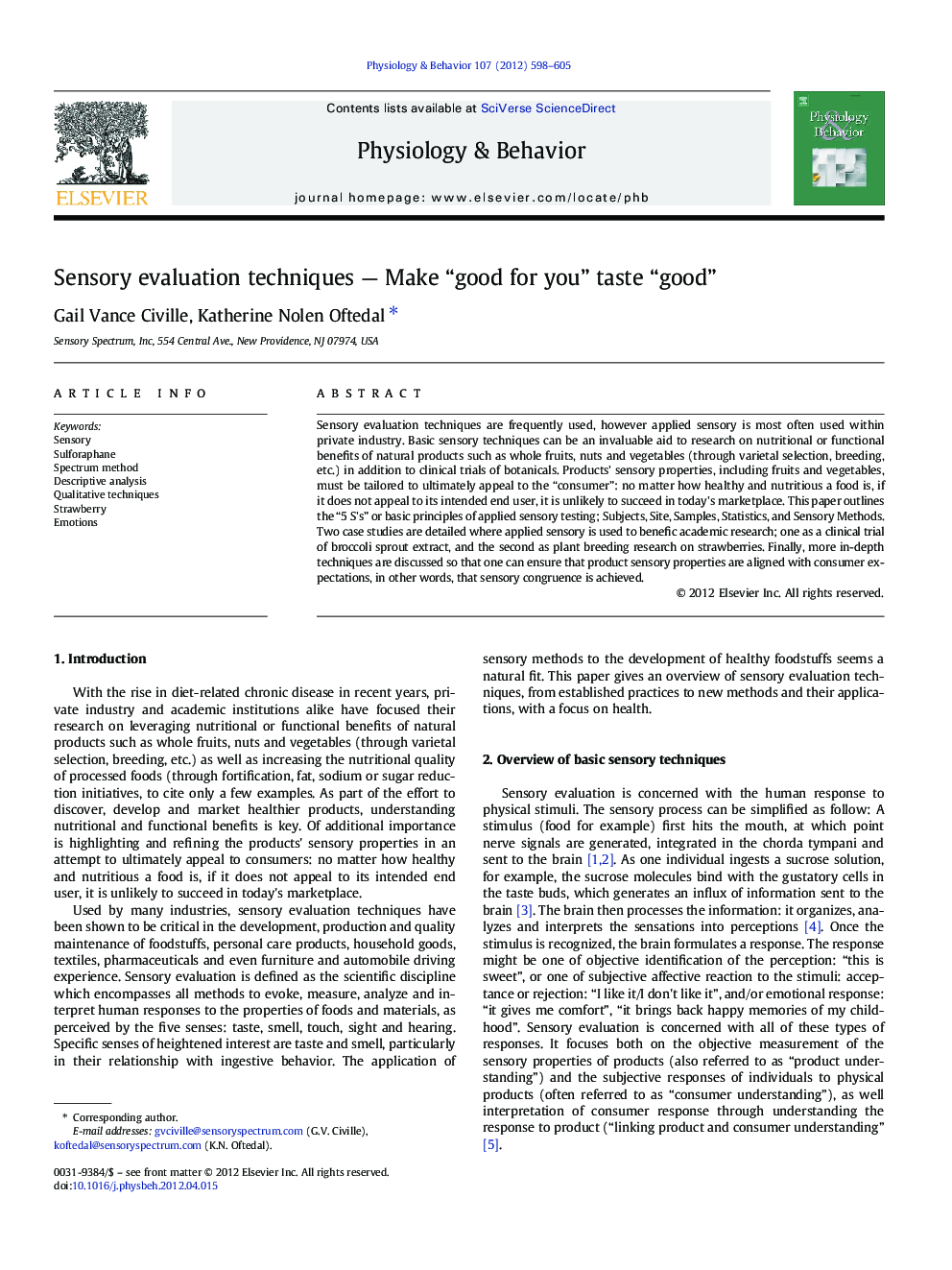| Article ID | Journal | Published Year | Pages | File Type |
|---|---|---|---|---|
| 2844490 | Physiology & Behavior | 2012 | 8 Pages |
Sensory evaluation techniques are frequently used, however applied sensory is most often used within private industry. Basic sensory techniques can be an invaluable aid to research on nutritional or functional benefits of natural products such as whole fruits, nuts and vegetables (through varietal selection, breeding, etc.) in addition to clinical trials of botanicals. Products' sensory properties, including fruits and vegetables, must be tailored to ultimately appeal to the “consumer”: no matter how healthy and nutritious a food is, if it does not appeal to its intended end user, it is unlikely to succeed in today's marketplace. This paper outlines the “5 S's” or basic principles of applied sensory testing; Subjects, Site, Samples, Statistics, and Sensory Methods. Two case studies are detailed where applied sensory is used to benefic academic research; one as a clinical trial of broccoli sprout extract, and the second as plant breeding research on strawberries. Finally, more in-depth techniques are discussed so that one can ensure that product sensory properties are aligned with consumer expectations, in other words, that sensory congruence is achieved.
► Gives explanation of product understanding sensory tools and consumer understanding sensory tools. ► Provides basic guidelines for good sensory practices, as applied in current-day research. ► Example of sensory research applied to masking the flavor of broccoli sprout extract (BSE) for clinical trials. ► Provides an example of sensory research applied to agricultural breeding research in strawberries.
